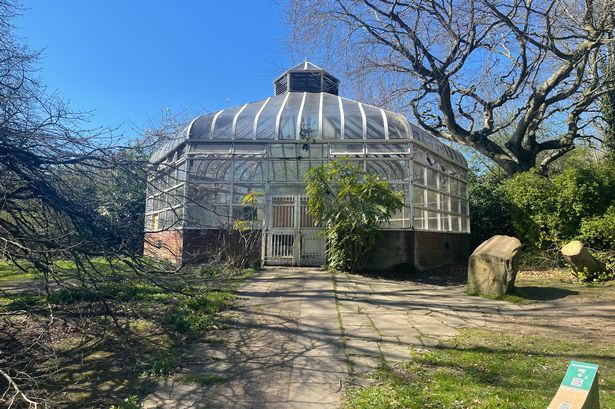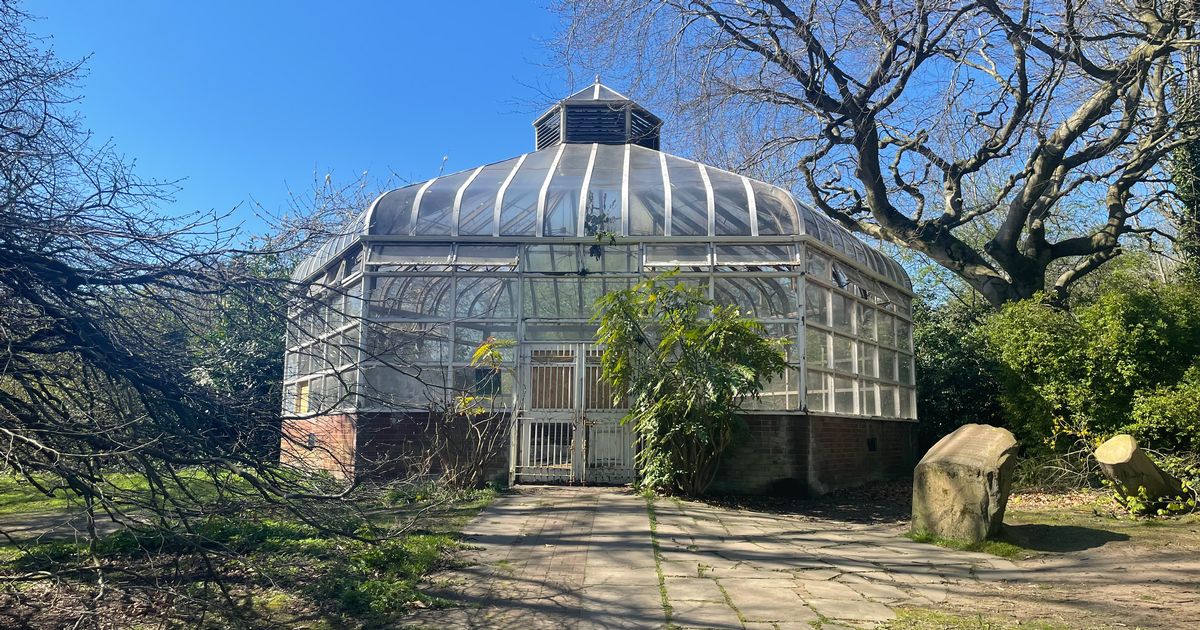The building has stood empty for a number of years
16:52, 03 Oct 2025Updated 16:52, 03 Oct 2025
 Calderstones Park greenhouse, which was once part of several greenhouses in the Liverpool Botanic Garden(Image: Liverpool Echo)
Calderstones Park greenhouse, which was once part of several greenhouses in the Liverpool Botanic Garden(Image: Liverpool Echo)
An update has been issued about a structure that was once home to a major Liverpool attraction. Calderstones Park, located in the Allerton area of south Liverpool, boasts a woodland, lake and Japanese gardens.
An empty greenhouse in the park is walked past by many every day without a second thought. But it is actually the last trace of the Liverpool Botanic Garden. For years, a trip to the park in Allerton would have included a visit to the orchid house, described by one plant lover as being better than the collections at the Kew and Cambridge botanical gardens.
Writing in the ECHO previously, the late lawyer Rex Makin said: “They contained numerous exhibits of a variety of plants and flowers forming a collection which had been assembled over centuries, Liverpool being one of the first municipalities to have such a collection in Botanic Gardens, Wavertree.
“Priceless orchids and other speciality plants had been accumulated over the years from rarities brought to the port from overseas by seamen from all over the globe.”
However, by the 1980s, the greenhouses had fallen into serious decline and were later demolished.
Only one greenhouse, known as the Harthill Vestibule, was left standing, which remains in the park to this day. It has been used for other purposes over the years, including housing the Neolithic Calderstones, but it has remained empty for several years.
The greenhouse was damaged a few weeks ago after a tree fell on it. The local Liberal Democrat councillors, Liz and Andrew Makinson, have raised this issue with the council.
In a statement issued last night, they said: “The parks department of the council are waiting for quotes to repair the Harthill Vestibule, which was recently damaged by a falling tree. The fountain in the sensory garden should finally be repaired after Liz offered to pay for the work from her neighbourhood fund.
“Other issues discussed included improving the “dog free” picnic area, which is widely ignored, and repairs to the lake, which should finally start next year.”
The ECHO approached the council about this and asked what the council’s plans are for future use. A spokesperson said: “We are in the process of repairing the Harthill Vestibule and working on further steps to ensure all visitors enjoy a safe visit to the park.”
According to Rachael Norris from The Reader, a reading charity based in the park, the first botanic garden in the city was built at the top of Mount Pleasant in the city centre in 1802. As Liverpool expanded and the air pollution grew, the greenhouse and its plants were moved to Wavertree Botanic Garden on Edge Lane in 1841.
That greenhouse was then destroyed by a bomb, which was dropped during the Second World War in 1941. Following the war, Percy Conn was employed by the Liverpool Corporation to manage the parks.
Instead of replacing the Wavertree Glasshouse, he planned an ambitious new scheme for the complex of glasshouses at Calderstones Park, which opened in 1964 and was often referred to as Harthill. A stone by the greenhouse marks the opening, although it has a different date for when the bomb dropped.
It says: “This stone commemorates the opening of the Liverpool Botanic Garden on September 18 1964 in replacement of the Edge Lane Botanic Garden, destroyed by enemy action on November 20 1940.”
By the 1980s however, “the wood was rotting, glass was falling out and the houses were not repaired”, according to Steve Lyus, a historian of the Liverpool Botanics writing in the Merseysider Magazine.
To make things worse, the greenhouses became a political football after the gardeners there refused to join a “day of action” in support of the council, which was then dominated by Militant.
The gardeners were demoted, and took the council to court, where they won. But shortly afterwards the council decided it could no longer afford to maintain the greenhouses. Many people opposed the closure at the time, with the ECHO interviewing protester Pat Doherty on September 7, 1984. The mum of three compared taking the orchids out of the hot house to “taking works of art out of the Louvre”.
Another fan of the orchids wrote in to the paper: “Please ask the Council to think again, it is such a beautiful place. I thought it to be one of your most cherished treasures in Liverpool. I have been to many orchid houses – such as Kew and Cambridge to name but a few – but none could be on a par with Harthill.”
